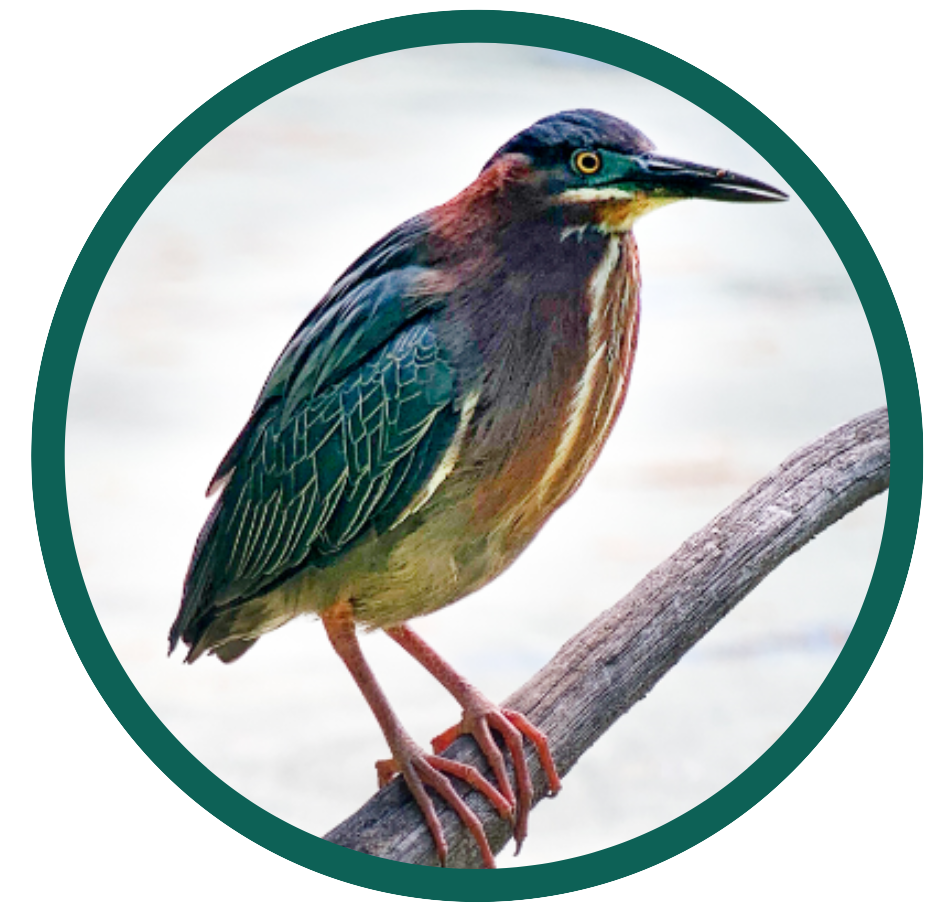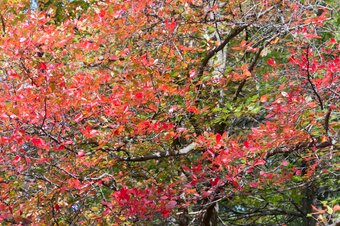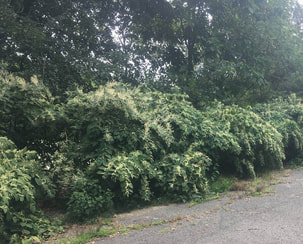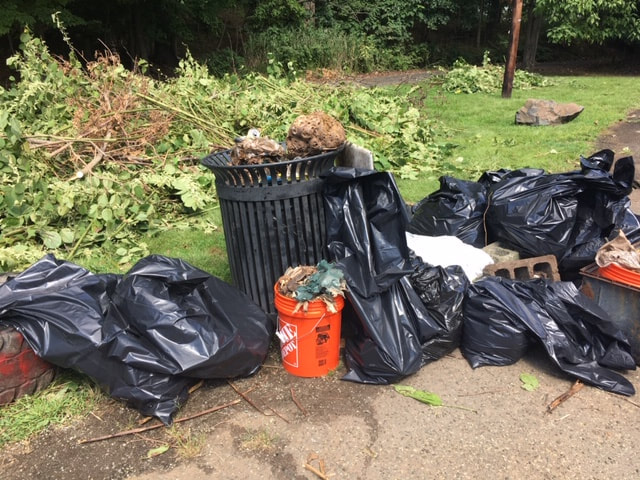Preserving Brightwood ParkThe ecosystem in the park is not healthy. It is threatened from
Friends of Brightwood Park is working in all these areas to strengthen and preserve the park. |
2023 Outlook: The Plant Project
Why Does Brightwood Park Need Restoration Efforts?
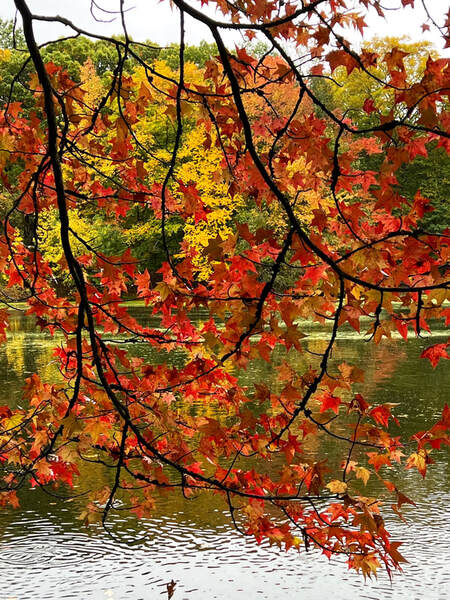
Just three years ago, Brightwood Park’s forest was facing significant challenges. Where old growth trees once stood, wisteria vines carpeted the ground and snaked around fallen tree trunks. Sections of blue sky stretched where there had once been leafy canopy. Eight foot tall knotweed spread over acres and obliterated sunlight choking out understory native shrubs and plants. Over the past three years, volunteers with the Westfield Parks Invasive Plants strike force have diligently retaken the forest from these and other invasive plants.
With the diminished threat from non-native invasive plants, there has been a resurgence of native plants including jack-in-the pulpits, pokeweed, white snakeroot, burnweed, dogbane, milkweed, and Wild Sarsaparilla in the park. Black-eyed Susan and other pollinator plants have popped up from seeds spread though other FOBP initiatives.
While this is a good sign, a key indicator of a healthy forest is a mix of saplings and trees of different sizes and age. Eagle Scout Adrian Gripp’s sapling survey showed that, throughout the forest, there was a dearth of saplings to ensure continued forest vitality.
Another indicator of a healthy forest is a biodiverse habitat. Biodiversity requires a variety of habitats and food. Old growth trees can provide shade and cover for prey animals like the red-tailed hawks that sometimes visit Brightwood. Downed logs and brush provide shelter for smaller rodents who need cavities and burrows. Grassy meadows allow animals to forage and pollinators to find flowers.
With these indicators in mind and with town approval, FOBP has implemented a phase of forest restoration.
With the diminished threat from non-native invasive plants, there has been a resurgence of native plants including jack-in-the pulpits, pokeweed, white snakeroot, burnweed, dogbane, milkweed, and Wild Sarsaparilla in the park. Black-eyed Susan and other pollinator plants have popped up from seeds spread though other FOBP initiatives.
While this is a good sign, a key indicator of a healthy forest is a mix of saplings and trees of different sizes and age. Eagle Scout Adrian Gripp’s sapling survey showed that, throughout the forest, there was a dearth of saplings to ensure continued forest vitality.
Another indicator of a healthy forest is a biodiverse habitat. Biodiversity requires a variety of habitats and food. Old growth trees can provide shade and cover for prey animals like the red-tailed hawks that sometimes visit Brightwood. Downed logs and brush provide shelter for smaller rodents who need cavities and burrows. Grassy meadows allow animals to forage and pollinators to find flowers.
With these indicators in mind and with town approval, FOBP has implemented a phase of forest restoration.
“The planting of a tree, especially one of the long-living hardwood trees, is a gift which you can make to posterity at almost no cost with almost no trouble, and if the tree takes root it will far outlive the visible effect of any of your other actions, good or evil.” |
Have you noticed some recent changes in Brightwood Park? Volunteers with the Friends of Brightwood Park (FOBP) have just planted 150 trees and shrubs in restoration efforts. With thanks to the Westfield Recreation Commission for sanctioning this work, FOBP has undertaken this effort to ensure the future health of the forest and eco-system.
|
Invasive Species Abatement
|
Invasive species are usually plants and animals that have been introduced into environments where they had never been before.
Some were accidental introductions; others were deliberate and thought to be useful additions to farmland or of horticultural interest. The problem with invasive species is that their new environment usually doesn’t have the natural enemies that exist in the environments from which they originate. Without diseases, predators or foragers, these species tend to dominate the new situation to the detriment of native plants, animals and environment generally. More on invasive species in Brightwood Park |
Park Clean-Up Events
|
The Friends of Brightwood held a number of volunteer clean up days at Brightwood during the fall.
Take a look at the the energy and progress! |
Nature Trail Development
Vickie Williams has found another interesting publication, Nature Trail Development on Small Acreages published by University of Arkansas. At page 8 there is a table of recommended design standards for different types of trails. Interestingly, the recommended distance for a mountain bike trail is 5-20 miles (more than 2 times the length JORBA proposes).
The publication has other interesting discussion of trails’ impact on vegetation and habitat.
Vickie Williams has found another interesting publication, Nature Trail Development on Small Acreages published by University of Arkansas. At page 8 there is a table of recommended design standards for different types of trails. Interestingly, the recommended distance for a mountain bike trail is 5-20 miles (more than 2 times the length JORBA proposes).
The publication has other interesting discussion of trails’ impact on vegetation and habitat.
Rahway River Association and Previous Restoration Efforts
At one time, Brightwood Park was the subject of serious nature study with a publication by Noel Taylor in 1981 that described the natural history, geology and ecology of the site. The booklet described all the species of fauna and flora that lived at Brightwood Park at the time.
In one of the most ambitious restoration effort thus far, the RRA retained the services of Ecological Solutions, LLC to develop a habitat restoration plan for Brightwood Park. Thanks to a generous grant by Conservation Resources, Inc., the RRA is planned to remove invasive plants, re-introduce native vegetation en masse, reconnect water bodies to reduce eutrophication and launch a public education initiative on site with local volunteers. Unfortunately, this plan was not acted upon.
In one of the most ambitious restoration effort thus far, the RRA retained the services of Ecological Solutions, LLC to develop a habitat restoration plan for Brightwood Park. Thanks to a generous grant by Conservation Resources, Inc., the RRA is planned to remove invasive plants, re-introduce native vegetation en masse, reconnect water bodies to reduce eutrophication and launch a public education initiative on site with local volunteers. Unfortunately, this plan was not acted upon.
